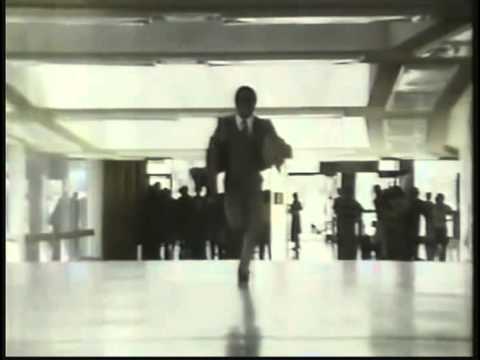10Man Of Few Words
In many ways, Arnold Schwarzenegger has built a career on being a man of very few words. Many fans don’t realize just how few those words are: In the first Terminator movie, the titular killing machine has only 18 lines, which comes to fewer than 100 words. Financially, though, this worked out for the actor. With his relatively low salary of $750,000 for The Terminator, Arnold was still raking in about $7,500 per word. That salary jumped to $15 million for Terminator 2, and Arnold’s word count jumped up to 700 words. That means, though, that his iconic line from that movie—“hasta la vista, baby”—was worth $85,716 on its own! If that’s not mind-boggling enough, one of his commands to John Connor in the movie—“Go!”—was worth $21,429. Given the increasing dollar-to-word ratio, it’s easy to see why Arnold had no problem living up to his promise of being back for future movies.
9More Bale, More Problems
When fans think of Terminator: Salvation and Christian Bale, they probably think of the unfortunate incident where Bale yelled at one of the crew on set. However, the fans themselves start yelling when they realize that a large part of the blame for Terminator: Salvation’s incoherent script can be laid directly at Bale’s hands. In the original script, Bale would have played the role of Marcus Wright, the executed convict who wakes up a confused cyborg in post-apocalyptic America. John Connor would have been akin to Michael Ironside’s character, onscreen for only a few minutes and kept well away from the front lines. Bale, however, was insistent on playing John Connor and having the character be a major part of the movie. Just like that, the movie went from having one major lead to two, and the script—already suffering due to the writer’s strike—had to awkwardly shoehorn Bale into scenes that didn’t need him. If this all seems confusing, don’t worry, Bale is right there with you. In an interview with io9, even he doesn’t remember why he wanted to play John instead of Marcus.
8O.J. Simpson Was Considered For The Terminator
It’s difficult to not think of the Terminator character as the iconic ’80s horror monster he was. Like Jason Voorhees and Romero’s zombies before him, the machine didn’t need to run to be scary. What was scary was the idea that he would never stop. In the mind of Orion Pictures chief Mike Medavoy, though, the Terminator needed to be highly athletic, able to run, jump over counters, etc. And he wanted the Terminator be someone who was already doing that in a series of goofy Hertz commercials: O.J. Simpson. In fact, Medavoy was initially so set on this casting that they wanted Arnold to play the human soldier from the future, Kyle Reese. In one of history’s greater ironies, O.J. Simpson lost out on the role because James Cameron thought that he seemed too nice . . . and that no one wanted to watch the nice black man chase down a white woman with a knife.
7Extensive Toys For Rated-R T2
For younger movie fans, the Terminator movies are historical artifacts, relics of a time that the R rating was not considered a serious impediment on a movie’s blockbuster chances. Helping those chances was the huge amount of marketing and ancillary products aimed squarely at children. This included an action figure line from toy giant Kenner. In contrast to modern Terminator “toys” that are ultra-realistic replicas designed for adult collectors, these were aimed at preteens and followed the depressing Batman toy trend of 90 percent of the line simply being variations of the title hero with names like “Power Arm Terminator” and “Secret Weapon Terminator.” Perhaps the weirdest of these murderbot toys for kids was the “Bio Flesh Regenerator Playset.” This set used a proprietary Play-Doh–like substance to create synthetic “flesh” around Terminator endoskeletons that could be horrifically blown or torn off in the simulated fight for humanity’s survival in an honest-to-God apocalypse. You know . . . normal kid stuff.
6The Terminator Movies, The Abyss And True Lies All Share A Universe
In a world dominated by comic book movies, it is easy for the average moviegoer to be unmoved about the idea of a shared movie universe. When Falcon appears in Ant-Man or Spider-Man swings into Captain America’s third film, no one bats an eye. However, Terminator creator James Cameron gets points for kicking the phenomenon off well before it became popular. It started when Cameron used the same actor to reprise his exact role as a news anchor to cover the events of The Abyss; previously, this actor and role appeared in 1984’s Terminator. And the Abyss protagonists work for Benthic Petroleum, a company whose logo is on a gas station seen by our heroes in Terminator 2. Cameron’s penchant for reusing actors appeared again when he reused an actor playing a reporter in The Abyss in the exact same role in another Arnold hit, True Lies. Does this shared universe mean the Terminators are modeled after Arnold’s heroic character in True Lies? The mind boggles.
5The Terminator Franchise Cannot Figure Out Time Travel
The first Terminator movie threw a couple of curveballs at the audience. One is that Kyle Reese becomes the father of John Connor, but he could only have done so because older Connor of the future ordered him to go back in time. The second is the creation of the Terminators themselves. As a deleted Terminator scene and Terminator 2 reiterate, Skynet and the future killing machines could never have been created if Skynet had not sent a killing machine to the past. Confused yet? In time travel terminology, this idea is referred to as a predestination paradox. Characters are caught in a loop in which they were destined to travel back in time. Even the most earnest time travelers cannot change the past, which is reinforced in the first movie by Kyle possessing in the future the same photo that Sarah has taken at the end of the movie. No choices, just fate—at least, until the sequels. Starting with Terminator 2, director Cameron switched thematic gears to the iconic phrase “no fate but what we make for ourselves.” Rather than being an inevitable bop back in time, the arrival of the good Arnold Terminator from the future is used to attempt to erase Skynet from ever existing. Terminator 3 breaks both these ideas, stating that you can change some events but fate is ultimately fixed: Judgment day happens, no matter what. The cherry on top of all of this temporal madness is that if the good guys ever succeed, they also fail . . . no Skynet means no Kyle Reese going back in time, which means John Connor is never born!
4The Beating Of Rodney King Influenced Terminator 2
Many remember the infamous Rodney King scandal, in which incontrovertible video evidence showed four members of the Los Angeles Police Department striking King with their batons 56 times, fracturing his skull. What many don’t know is what was on the first part of that video tape: footage of Terminator 2 being filmed. Los Angeles resident George Holliday was able to film both the beating and footage of the bar where a naked Schwarzenegger takes on a biker gang from his apartment. Cameron would later claim they were still filming the movie on location while Rodney King was being beaten. While the decision had already been made that the T-1000’s default appearance would be as a cop—someone others look up to but who is secretly a literal killing machine—the events shaped how some of the T-1000’s scenes played out. Cameron later told The LA Times that the video and its connection to Terminator 2 were ironic “considering that the LAPD are strongly represented in Terminator 2 as being a dehumanized force” and that “what the film is about, on the symbolic level, is the dehumanization we do on a daily basis.” Considering the recent explosion of similar citizen recordings of police brutality, it’s as if the time-travel obsessed director took a genuine peek into the future.
3Linda Hamilton Suffered For Terminator 2
To this day, Linda Hamilton remains the go-to ideal for many women when they work on developing muscles. Hamilton herself worked quite hard to make that happen. She received training in both judo and automatic weapons from the Israeli ex-commando Uzi Gaz, despite her own pacifist views at the time. She also spent an entire year doing mixed workouts for a minimum of three hours a day, from lifting weights to bicycling to aerobics. Because of her new and improved body, Hamilton did most of her own stunts, deciding that she didn’t want to surrender any screen time after working so hard on her physical appearance. This willingness eventually cost her. One day, she forgot to wear earplugs for a scene in an elevator, and she was freaked out and deafened when shotguns starting firing all around her. In the long term, this led to partial deafness in one ear, and in the short term, it led to shell shock, which she started manifesting after what she described as a day of “running around on broken glass.” Despite this, she maintained a grim of sense humor. When discussing whether she had any lasting mental damage from the experience, she said “from my marriage, definitely,” referring to her brief marriage to Terminator director James Cameron.
2Terminator: Genisys Sent Nike Back In Time
It turns out that the most implacable machine on the set of Terminator: Genisys was not Arnold but costume designer Susan Matheson. Part of her job involved getting actor Jai Courtney, who plays Kyle Reese, to look the part of original actor Michael Biehn. There was just one problem: Nike no longer produces the Nike Vandals featured in the first Terminator movie. Nike thought the solution would be simple. They asked her to simply design some new shoes based on their popular Air Force Ones. Matheson stood her ground, saying that real fans would recognize some faux kicks used in place of the real thing. She cited the original Terminator and Mad Max films as the very reasons she went into filmmaking and decided she wouldn’t do the movie if she couldn’t do the shoes justice. Surprisingly, Nike relented, shutting down other projects long enough to create exact replicas of those amazingly ’80s shoes. Matheson is blunt about her stand against the dual corporate machines of Hollywood and Nike, calling this her “single greatest moment on this entire movie.” Of course, it’s all fun and games until future Nike sends a naked Air Force One back in time to undo her victory.
1Terminator: Salvation’s Original Endings Were All Insane
At the time the movie debuted, it was a relatively open secret that the Internet had seriously damaged Terminator: Salvation by leaking the original ending. That ending would have involved human resistance leader John Connor dying and being replaced (complete with face transplant) by the Cyborg Marcus Wright. The finished project, of course, involved Marcus dying to save Connor . . . and while it’s already notable that a major studio completely scrapped all future franchise possibilities for the Wright character over an Internet leak, it turns out other endings for the film were considered, and all were utterly insane. The lead-up to the face switcheroo originally had the revelation that Skynet was not trying to kill humanity but to save it. Specifically, Skynet had calculated that humanity would be extinct within two centuries and decided to convert some humans into cyborgs. Our heroes discover this when they encounter a seaside resort of humans that Skynet has decided to transform into hybrid humans/machines. Kyle Reese even dies, his brain uploaded to Skynet. Wright undoes this via the franchise’s least ambitious time travel ever, going back mere minutes instead of hours or days. Ultimately, though, our heroes are mostly victorious, with Connor dying and being replaced by Wright. The day is saved . . . . . . Or is it? Director McG insists that there was an even darker twist to this original ending. After waking up with Connor’s face, Wright’s eyes would go red, and he would murder all of the resistance fighters in the room, including Connor’s wife Kate and Connor’s future father Kyle Reese. At that point, we fade to black, with Skynet definitively winning the fight against humanity. Come with @PocketEpiphany if you want to live . . . or at least, read a lot of geek stuff.
























